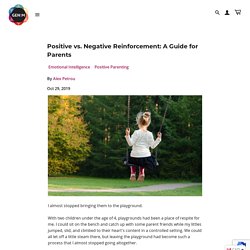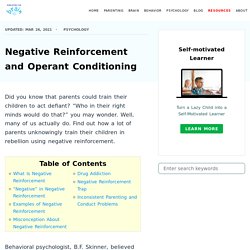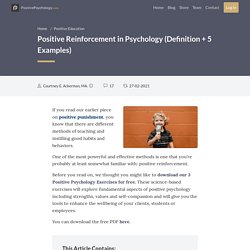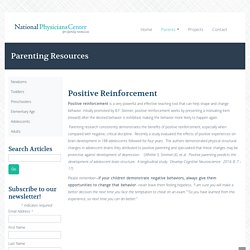

Parentyourteen October 29th 2019. Teenage brain development. Teenage brain development: the basics Children’s brains have a massive growth spurt when they’re very young.

By the time they’re six, their brains are already about 90-95% of adult size. But the brain still needs a lot of remodelling before it can function as an adult brain. This brain remodelling happens intensively during adolescence, continuing into your child’s mid-20s.
Revealed: the teenage brain upgrades that occur before adulthood. By Andy Coghlan The final brain edit before adulthood has been observed for the first time.

MRI scans of 300 adolescents and young adults have shown how the teenage brain upgrades itself to become quicker – but that errors in this process may lead to schizophrenia in later life. The editing process that takes place in teen years seems to select the brain’s best connections and networks, says Kirstie Whitaker at the University of Cambridge.
Sarah-Jayne Blakemore: The mysterious workings of the adolescent brain. Kashfia Rahman: How risk-taking changes a teenager's brain.
Learning: Negative Reinforcement vs. Punishment. Positive vs. Negative Reinforcement: A Guide for Parents – Generation Mindful. I almost stopped bringing them to the playground.

With two children under the age of 4, playgrounds had been a place of respite for me. I could sit on the bench and catch up with some parent friends while my littles jumped, slid, and climbed to their heart's content in a controlled setting. We could all let off a little steam there, but leaving the playground had become such a process that I almost stopped going altogether.
Inevitably, when I announced it was time to go, my 3-year-old would run away. Positive Punishment: What It Is, Benefits, and Examples. Reinforcement and Punishment. Learning Objectives Explain the difference between reinforcement and punishment (including positive and negative reinforcement and positive and negative punishment)Define shapingDifferentiate between primary and secondary reinforcers In discussing operant conditioning, we use several everyday words—positive, negative, reinforcement, and punishment—in a specialized manner.

In operant conditioning, positive and negative do not mean good and bad. 8.2 Changing Behaviour through Reinforcement and Punishment: Operant Conditioning – Introduction to Psychology – 1st Canadian Edition. Learning Objectives Outline the principles of operant conditioning.Explain how learning can be shaped through the use of reinforcement schedules and secondary reinforcers. In classical conditioning the organism learns to associate new stimuli with natural biological responses such as salivation or fear. The organism does not learn something new but rather begins to perform an existing behaviour in the presence of a new signal. Negative Reinforcement and Operant Conditioning.
Did you know that parents could train their children to act defiant?

“Who in their right minds would do that?” You may wonder. Well, many of us actually do. Positive Reinforcement in Psychology (Definition + 5 Examples) If you read our earlier piece on positive punishment, you know that there are different methods of teaching and instilling good habits and behaviors.

One of the most powerful and effective methods is one that you’re probably at least somewhat familiar with: positive reinforcement. Before you read on, we thought you might like to download our 3 Positive Psychology Exercises for free. These science-based exercises will explore fundamental aspects of positive psychology including strengths, values and self-compassion and will give you the tools to enhance the wellbeing of your clients, students or employees. You can download the free PDF here. What is the Meaning of Positive Reinforcement? 12 Examples of Positive Punishment & Negative Reinforcement. You might be thinking that “positive punishment” sounds like an oxymoron, after all, how can punishment be positive?

Not many people “like” punishment, right? The disconnect in understanding this concept comes from the usage of the word “positive;” here at PositivePsychology.com, we generally use the term “positive” to refer to things that are inherently good, things that are life-giving, and things that promote thriving and flourishing. The concept of positive punishment comes from a very different era and a very different perspective on psychology; namely, the 1930s and behaviorism. Effective Consequences for Teenagers. If you’re having trouble giving effective consequences to your teen, know that you are not alone.

Many parents tell me that nothing seems to work, and that coming up with the right thing for their child can seem like an impossible task. If you’re the parent of an adolescent, you may have grounded your child, taken away their video games, or suspended their driving privileges for months on end. But as James Lehman says, you can’t punish kids into acceptable behavior—it just doesn’t work that way. Positive Reinforcement - Tips for teaching and parenting. BYU Study: a need for positive reinforcement among teens.
There are countless publications describing the best ways to raise a child in the hopes of them becoming successful adults.

Between the books, magazines and video tutorials, parents may be finding themselves overwhelmed on more than one occasion. But a group of researchers at Brigham Young University have found the answer to helping children through life may be less complicated than it seems. The BYU study found bad behavior can be discouraged among children by simply encouraging good behavior. Positive Reinforcement. Positive reinforcement is a very powerful and effective teaching tool that can help shape and change behavior.

Initially promoted by B.F. Skinner, positive reinforcement works by presenting a motivating item (reward) after the desired behavior is exhibited, making the behavior more likely to happen again. Parenting research consistently demonstrates the benefits of positive reinforcement, especially when compared with negative, critical discipline. Recently a study evaluated the effects of positive experiences on brain development in 188 adolescents followed for four years. Positive Reinforcement for Adolescents. By the time children have reached adolescence, their responses are often ingrained, but parental actions can still positively affect adolescent behavior. Since adolescents are struggling to develop their personal identity and are concerned about their body image, parental support is crucial to help positively frame experiences as learning opportunities.
Positive reinforcement remains a powerful teaching tool during these formative years, and we encourage parents to take time to contemplate the ways they can help adolescents mature and become self-reliant. Brain Study Reveals How Teens Learn Differently Than Adults. Scientists have uncovered a unique feature of the adolescent brain that enriches teens’ ability to learn and form memories: the coordinated activity of two distinct brain regions. This observation, which stands in contrast to the adult brain, may be related to teens’ oft-derided affinity for reward-seeking behavior. These findings suggest that such behavior is not necessarily detrimental, but instead may be a critical feature of adolescence and the maturing brain.
The results of this research were published today in Neuron. Positive Reinforcement as Opposed to Negative for Teen Issues - Empowered Teens And Parents. Looking at the Good: Are You Providing Your Teen with Enough Positive Reinforcement? How to Reward Good Behavior and Calm Teen Issues 1. Look at Effort, Not Results. Parenting Teens: When It Comes To Learning, Positive Reinforcement Trumps Punishment. Teens generally aren’t afraid to defy authority. Generations of parents know this, having tried different strategies for getting their adolescents to do what they ask — often in attempts to keep them safe and help pave a path toward success. Now, a new study shows that rewards, rather than punishments, could be the way to get them to cooperate. Researchers at the University College London asked 18 volunteers aged 12 to 17 and 20 volunteers aged 18 to 32 to complete both a learning task and post-learning task in which they chose between abstract symbols, each associated with a fixed chance of reward, punishment, or no outcome.
As the trial progressed, participants learned which symbols were likely to lead to each result and adjusted their choices accordingly. Discipline strategies for teenagers. Discipline for Teens: Strategies and Challenges. Turning Parent-Teen Stress Into Parent-Teen Success. Julie Lythcott-Haims: How to raise successful kids. Youtube. Discipline Without Fear.